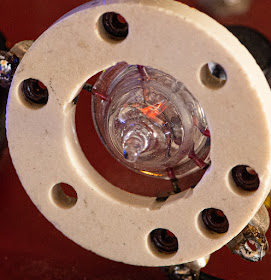Here a sneak preview of our new 300B variant, a molybdenum plate version of the ER300B.
We just got prototypes of the new molybdenum plate 300B freshly off the vacuum pump.
This new 300B will not replace the existing ER300B but will be a premium version as we have done with the ER242 a d ER284 which are molybdenum plate equivalents of the ER211 and ER845.
Technical specs remain the same the only difference is the use of molybdenum as plate material rather than nickel.
Since the molybdenum as plate material makes a remarkable difference in the ER242 and ER284 it was a logical step to introduce a molybdenum 300B as well.
We still need to do some qualification and productisation steps before the tube can be released. But after I listened to the prototypes I had the urge to share the news. The molybdenum enhances the qualities of our ER300B which is praised for its airy and high resolution sound with a solid bass and strong tone colours.
I am very excited to share the news about this new tube development. An announcement will follow when the tube is ready to order and ship
Best regards
Thomas











































